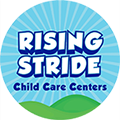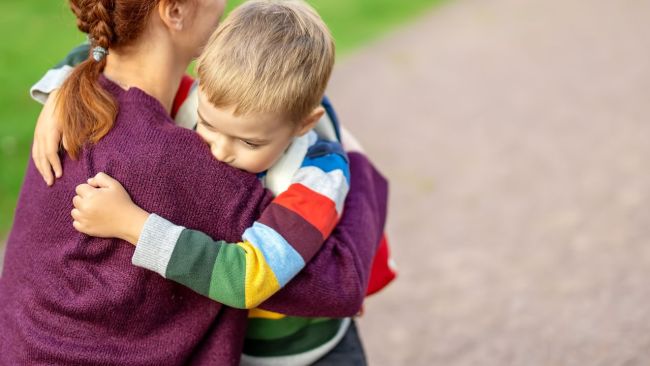For many parents, childcare drop-off can feel like a tough ride — hurrying to get out the door, handling sudden tantrums, and facing that heartbreaking moment when your child holds on to you, crying as you go. It’s a tough situation that can leave both parents and kids feeling stressed, anxious, or even guilty.
But here’s the good news: with a few simple daycare drop-off tips, you can ease separation anxiety, create a smoother morning routine, and boost your child’s confidence in their childcare experience. Whether your little one is just starting out or still getting used to it, these suggestions will help make mornings happier, calmer, and more predictable — for both of you.
Why Is Childcare Drop-Off So Hard for Some Kids?
For lots of kids, saying goodbye at childcare can be really hard. It can lead to tears, clinginess, or even big tantrums. While it’s tough to watch your child have a hard time, it’s good to know that this is totally normal and a part of growing up. Knowing why this happens and how long it usually lasts can help parents handle this change with more confidence and comfort.
Understanding Separation Anxiety in Young Children
Separation anxiety is a natural developmental stage that many young children go through, especially between 6 months and 3 years of age. At this stage, children are forming strong emotional bonds with their primary caregivers, and the idea of being apart from them — even for a short time — can feel unsettling.
Common reasons why kids struggle with childcare drop-off include:
– Fear of the unknown – New faces, a different routine, and unfamiliar surroundings can feel overwhelming.
– Lack of understanding of time – Young children don’t yet grasp the concept that you’ll always return, making goodbyes feel more permanent.
– Emotional regulation challenges – Toddlers and preschoolers are still learning how to process big feelings like fear, sadness, or uncertainty.
The good news? Separation anxiety is temporary, and with the right support, children learn to feel safe, secure, and excited about their daycare experience.
How Long Does It Take for Kids to Settle Into a Routine?
Every child adapts to childcare in their own time, but most settle in within two to six weeks. However, this can change depending on their personality, past experiences, and temperament.
What to Expect:
First Few Days – Many kids might cry or resist drop-off as they get used to the new place.
Week 1–2 – Some children start feeling more at ease as they make connections with their educators and friends.
Week 3–6 – A regular routine helps kids feel secure, making drop-offs easier and tear-free.
Beyond 6 Weeks – Some kids may take longer to adjust, but continuous support, reassurance, and routine can help them feel more at home.
If your child is still having a tough time after a few weeks, it’s a good idea to talk to their caregivers. They can offer helpful tips to ease the transition. With a bit of patience, encouragement, and a steady routine, most kids will come to enjoy their experience!
How to Make Drop-Off Easier – Practical Tips
Childcare drop-offs don’t have to be stressful! With the right strategies, you can help your child feel secure, confident, and excited about their childcare experience. Here are some simple tips to make mornings easier for both of you.
Establishing a Consistent Morning Routine
Young children thrive on predictability, and a steady morning routine can ease their worries by showing them what to expect. A calm start to the day sets a positive tone for drop-off.
– Wake up at the same time each day to avoid rushing.
– Follow a routine—breakfast, getting dressed, brushing teeth, and packing their bag together.
– Keep goodbyes short and cheerful—lingering can make it tougher.
– Allow extra time for drop-off—rushing can add stress for everyone.
By making mornings predictable and calm, children feel more secure and ready for the day ahead.
Preparing Your Child Emotionally Before Drop-Off
Talking about daycare positively at home can help children feel excited and less worried before drop-off.
– Read books about daycare to introduce the idea in a fun way.
– Mention their teachers and friends by name to create familiarity.
– Play pretend at home—act out drop-offs, circle time, and playtime.
– Acknowledge their feelings: “I know saying goodbye is hard, but you’re going to have so much fun with your friends today!”
By encouraging positive feelings about childcare, children become more comfortable and excited about their daily routine.
What to Do If Your Child Cries at Drop-Off
Childcare drop-off crying is completely normal (for parents as well as children), especially in the first few weeks. The key is to stay calm, reassuring, and consistent.
– Acknowledge their feelings: “I know you’re feeling sad right now, and that’s okay. I’ll be back to pick you up later!”
– Keep goodbyes brief and positive—the longer you linger, the harder it gets.
– Trust the educators—they know how to comfort and distract children once parents leave.
– Stick to the routine—children adapt faster when they know what to expect.
After drop-off, crying will usually stop within a few minutes after parents have left, so while it’s tough to walk away, they will adjust and feel safe in time.
Common Mistakes Parents Make During Drop-Off (And What to Do Instead)
Even the kindest parents can unintentionally make drop-offs harder for their child. Recognizing these common pitfalls and learning better ways can help create a smoother, calmer transition for both you and your little one.
Mistake #1: Lingering Too Long at Drop-Off
Why it’s a problem: The longer you stay, the tougher it gets for your child to let go. Long goodbyes can raise anxiety and make separation harder.
What to do instead:
– Keep goodbyes short, positive, and consistent—a hug, a quick goodbye phrase, and off you go!
– Trust the educators to comfort your child after you leave.
– Remind them when you’ll be back and stick to it to build trust.
Mistake #2: Sneaking Away Without Saying Goodbye
Why it’s a problem: It might seem easier to sneak off, but this can make your child feel abandoned or insecure.
What to do instead:
– Always say goodbye with confidence — even if they’re upset, letting them know you’re leaving helps build trust.
– Use a regular goodbye ritual (like a high-five or a special phrase).
– Reassure them that you will always return, even if they feel sad right then.
Mistake #3: Showing Anxiety or Guilt
Why it’s a problem: Kids are very observant—if you seem anxious or guilty, they’ll feel more nervous about daycare.
What to do instead:
– Stay calm, confident, and cheerful—even if you feel emotional inside.
– Talk positively about daycare: “You’re going to have so much fun today!”
– Remember that daycare is a great place for their learning and independence.
Mistake #4: Allowing “Just One More Hug” Requests
Why it’s a problem: While it’s natural to comfort your child, giving in to multiple hugs can make it harder for them to let go.
What to do instead:
– Stick to a steady goodbye routine and gently, but firmly, say goodbye just once.
– Let the educators take over—most kids calm down within minutes after parents leave.
– Trust the process—consistency helps kids feel more secure over time.
Mistake #5: Rushing Through Drop-Off Without Connection
Why it’s a problem: If your child feels rushed, they may feel insecure, making the transition harder.
What to do instead:
– Spend a few moments connecting before drop-off—hold their hand, chat about their day, or walk them to an activity.
– If you can, arrive a bit early to help them adjust before saying goodbye.
– Keep the balance — connect, reassure, and then confidently say goodbye.

